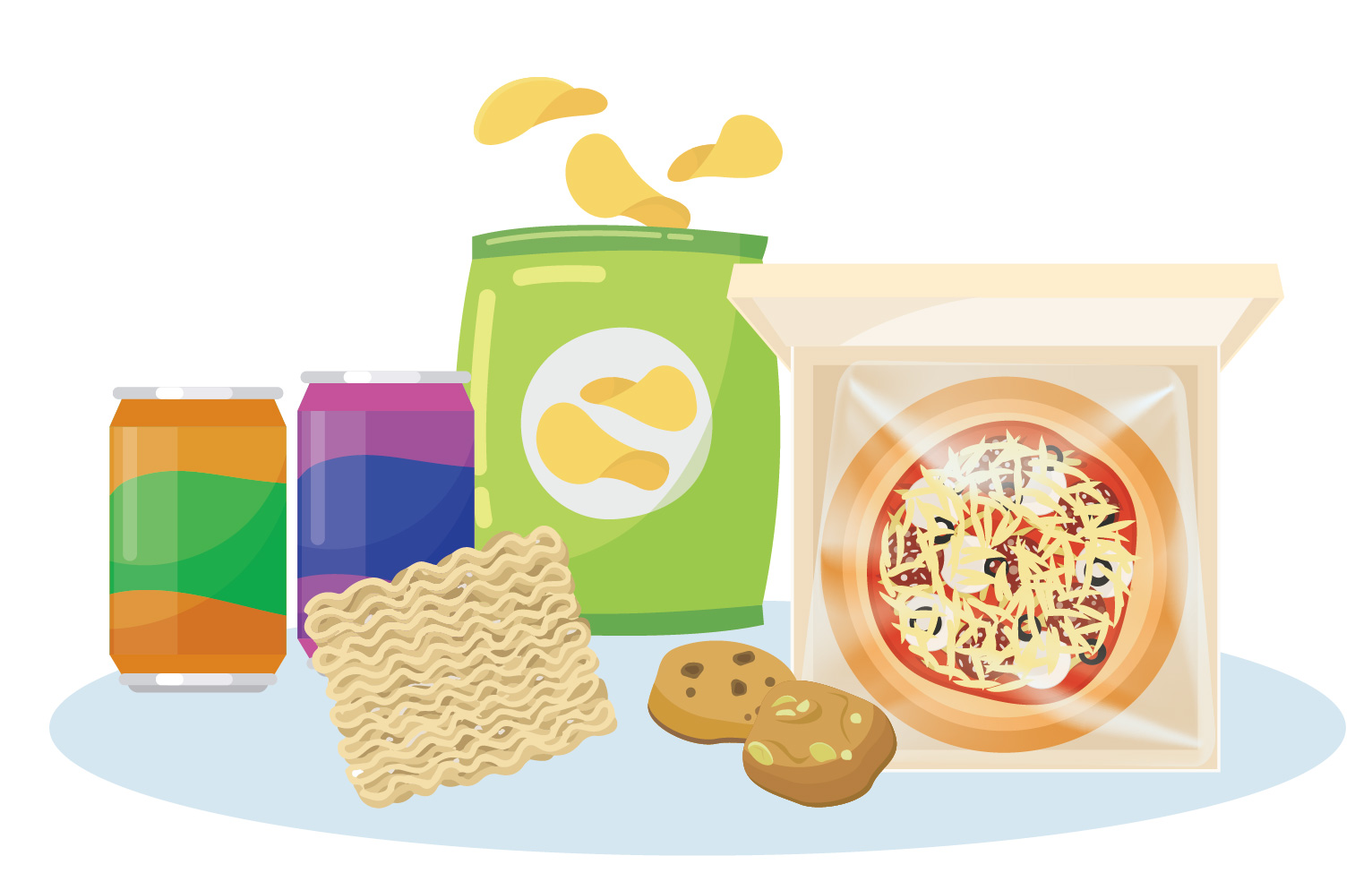
Food Safety Focus (213rd Issue, April 2024) – Article 2
Understanding Ultra-processed Foods and the Related Healthy Eating Approaches
Reported by Ms. Amy Leung, Dietitian,
Risk Assessment Section, Centre for Food Safety
The subject of ultra-processed food is a hot topic among nutritionists and health professionals. In this article, we will briefly go into the history of this term, how the Food and Agriculture Organization of the United Nations (FAO) used this term in their publication and how the public should adopt a healthy diet in light of the given information.
How this Term Arose and How it is Cited in the FAO Publication
The term "ultra-processed foods" first came from a paper written by researchers at the University of Sao Paulo in Brazil in 2009. They put forth the NOVA system, a food classifying system that groups foods according to the degree of processing, aiming to improve the understanding of food processing and its effects on health, as nutrients or foods are thought to be inadequate in capturing its impact. Currently, foods are categorized into four groups in the FAO publication.
-
Group 1: Unprocessed or minimally processed foods - these foods are in their natural state or have undergone minimal processing such as drying, freezing and vacuum packaging. Examples include fresh fruit, frozen vegetables and powdered milk.
-
Group 2: Processed culinary ingredients - these foods are ingredients used for cooking at home or in restaurant kitchens and are produced through processes such as pressing, refining and milling. Examples include vegetable oils, sugar and salt.
-
Group 3: Processed foods - these food items are made by combining Group 1 with Group 2. Examples include canned vegetables in brine, tinned fish preserved in oil and salted or sugared nuts and seeds.
-
Group 4: Ultra-processed foods - these products are typically made through industrial manufacturing processes. Sugar, oils and fats and salt are commonly used in ultra-processed foods and are often combined as ingredients. In addition, ingredients characteristic of ultra-processed foods are either food substances that are rarely used in culinary practices or classes of additives (such as flavour enhancers, colours and artificial sweeteners). Examples include carbonated soft drinks, potato chips, cookies, instant noodles and frozen pizzas.
How do some Health-related Authorities and Organisations View it?
The FAO publication reviewed studies on ultra-processed foods, and pointed out the association between their nutritional quality (including high levels of free or added sugar, saturated and trans fats, sodium and energy density, and low protein, fibre and potassium content) and non-communicable diseases. Some international organisations, such as the National Institutes of Health of the United States, Pan American Health Organization of the World Health Organization and the Lancet, emphasize the negative impact of ultra-processed foods on health and some even link them as a cause of obesity. They recommend reducing or eliminating these foods from the diet in favour of unprocessed, nutrient-packed options.
Furthermore, a recent large-scale study that was published in the British Medical Journal in February 2024 found that consuming a larger amount of ultra-processed foods increases the risk of a range of health problems such as cardiovascular disease, diabetes, obesity, anxiety and mortality. However, the researchers acknowledge that the study has its limitations. For example, confounder adjustments such as those for unhealthy dietary patterns have not been considered. Additionally, more studies are required to help to understand how ultra-processed foods affect health.

Figure 2: Common examples of ultra-processed foods, such as carbonated soft drinks, potato chips, cookies, instant noodles, and frozen pizza
How the Public Should Approach Such Food Classification
Rather than trying to completely abstain from the consumption of ultra-processed foods, one should eat a healthy and balanced diet, which entails consuming a variety of food in the appropriate amounts as recommended by the Healthy Eating Food Pyramid. When adopting a healthy and balanced diet, it is more important to consider the nutritional quality of foods than the level of processing alone. In fact, one of the existing key messages promoted by the Department of Health in healthy eating principles is to reduce the intake of foods with high fat/oil, salt and sugar content as well as preserved and processed foods. Here are some easy and healthy eating tips demonstrating how to practise this principle:
- Replace carbonated soft drinks with water, water infused with a slice of fresh fruit (such as lemon, orange) or tea.
- Snack on unsalted and non-fried nuts or seeds and fruit (such as fresh apple slices, dried and unsweetened apricots) instead of potato chips and cookies.
- Prepare healthy meals at home. For example, instead of having instant noodles with luncheon meat or sausages, cook non-fried noodles in soup with fresh or frozen vegetables and fresh meat or fish slices.
Notwithstanding the difficulty in classifying foods according to the NOVA system due to the ambiguous nature of classification, limiting the intake of fatty, salty, or sugary products in this food class can still be achieved by reading nutrition labels. Therefore, do make it a habit to use nutrition labels for choosing appropriate prepackaged foods which are, for example, lower in sugar and salt content. For individuals who need personalised health advice, please consult a dietitian or healthcare professional.

